AMH Test: All About Anti-Mullerian Hormone Levels and Normal Range
Fertility Treatment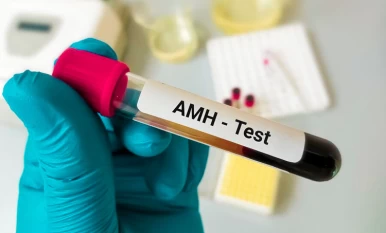
Understanding the AMH test's normal range is essential for women trying to conceive or concerned about their fertility. The AMH, or ovarian reserve test, is one of the most important female fertility tests. This test measures AMH, or anti-mullerian hormone, levels secreted by Antral follicles. The AMH normal range can vary depending on several factors, including age and individual characteristics.
Generally, higher AMH levels in females indicate a greater ovarian reserve, suggesting that a woman has a larger pool of eggs available for fertilization. Interpreting measures of ovarian reserve or oocyte quantity also plays a key role in determining the appropriate dosage of fertility medications, especially the ones used in IVF treatment.
High AMH levels (more than 1 ng/mL) usually mean that a woman has an AMH normal range, while low AMH levels (less than 1 ng/mL) may indicate diminished ovarian reserve (DOR). Read on to learn more about AMH, the AMH test, and what a good AMH level is for getting pregnant.
Test | Detail |
Sample Type | Blood |
Collection Method | In-person at an accredited laboratory |
Age Requirement | 18+ |
Result Timeline | Results will be available within 7-14 days after the lab receives the sample. |
preparation | The sample should be collected on the third day of the menstrual cycle for accurate results. Samples taken on the second or fourth day may also be acceptable. Avoid testing if on hormone therapy. |
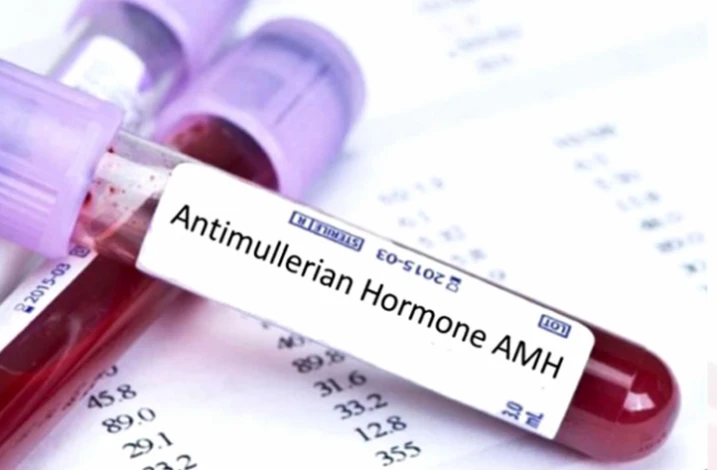
What is AMH?
Anti-müllerian hormone, also known as Mullerian-inhibiting substance (MIS), is a glycoprotein secreted by granulosa cells of primary ovarian follicles during puberty and fertility. Since AMH is produced only by small Antral follicles with a diameter of less than 6 mm, its count in the blood can measure the growing follicles and the total ovarian reserve.
There is no anti-müllerian hormone in follicles larger than 8 mm, so the Anti-mullerian level is almost constant in the body. Aging causes diminished ovarian reserve (DOR) and will decrease the level of AMH in the body. On the other hand, when there are many small follicles in the ovary - like in PCOS -the level of AMH increases. Therefore, an AMH test is recommended. An increase in AMH levels will be beneficial in diagnosing PCOS.
How is the AMH test Done?
A laboratory blood test measures AMH levels through superficial veins. This is one of several tests used to measure ovarian reserve. The fertility doctor may recommend combining these tests for the final diagnosis.
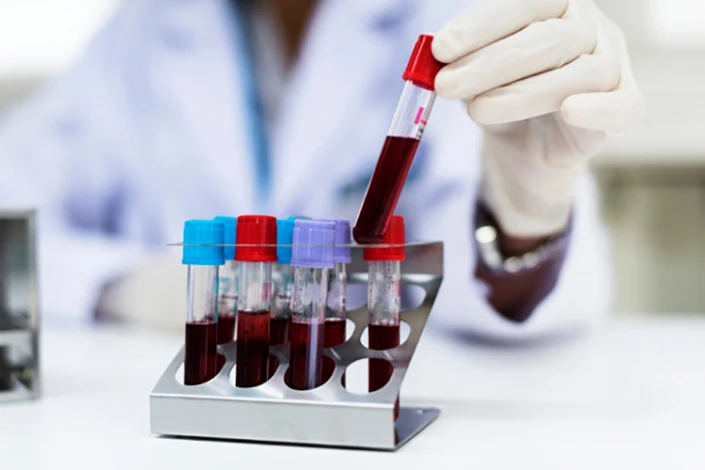
What Is a Good AMH Level for Getting Pregnant?
The AMH normal range highly depends on the patient's age. For example, the range of ovarian reserve that is normal for a 42-year-old woman may be a sign of early ovarian aging (EOA) in a 32-year-old woman.
The AMH test normal range in women who are under 35 years old is as follows:
AMH Level | AMH Test Interpretation |
more than 4 ng/mL | high |
1.5 - 4 ng/mL | normal |
1 - 1.5 ng/mL | a bit lower than normal |
0.5 - 1 ng/mL | low |
less than 0.5 ng/mL | very low |
What is the normal AMH level for age?
For women in their 20s and early 30s, AMH normal value typically ranges between 1.5 and 3.0 ng/mL. However, they can vary between individuals, and interpretation should be based on other fertility tests and medical history. Additionally, as women age, AMH levels naturally decline, and by the late 30s or early 40s, they are commonly falling below 1.0 ng/mL.
Age Group | AMH Level Range (ng/mL) | Description |
Under 25 | 4.1 - 6.8 | Very high ovarian reserve |
25 - 30 | 2.9 - 5.8 | High ovarian reserve |
31 - 35 | 1.5 - 4.0 | Normal ovarian reserve |
36 - 40 | 0.5 - 1.5 | Reduced ovarian reserve |
Over 40 | < 0.5 | Low ovarian reserve, diminished fertility |
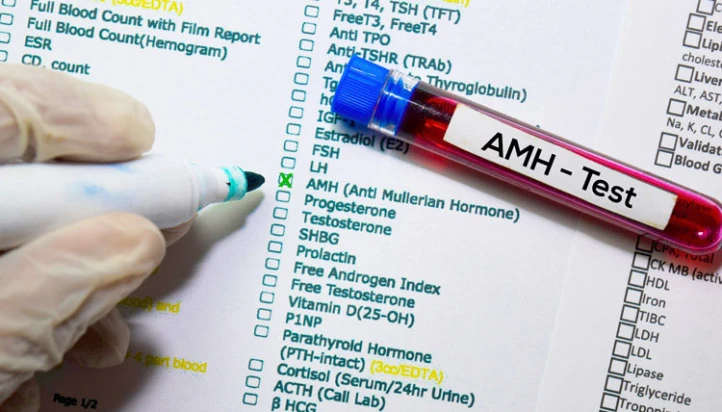
Understanding AMH Test Results
Interpreting the results of the AMH or ovarian reserve test results helps determine the best time to get pregnant and the probability of fertility. In the following, the AMH test results are explained:
- The AMH test's normal range is not exact and specific. However, an AMH level of less than 0.5 ng is usually an indicator of low ovarian reserve. In this case, a maximum of 2 to 3 follicles is obtained.
- AMH levels between 0.5 and 1 ng/mL are markers of low ovarian reserve. In this case, a low number of eggs is obtained.
- AMH level between 1-3.5 ng/mL indicates a normal range of ovarian reserve. This level suggests a good response to the treatment.
- AMH level of more than 3.5 5 ng/mL indicates a poor response to ovarian stimulation drugs. Therefore, doctors should use an appropriate dose of medications. However, the average hormone level fluctuates at different ages.
Male traits in women occur due to a tumor that produces the anti-müllerian hormone or the presence of undescended testes (cryptorchidism) in women's bodies. This condition is a rare genetic disease in which the testicles can be hidden entirely or appear as ambiguous (uncertain) genitalia. Furthermore, in masculine women with an average level of Anti-Mullerian hormone, AMH is produced by the adrenal glands.
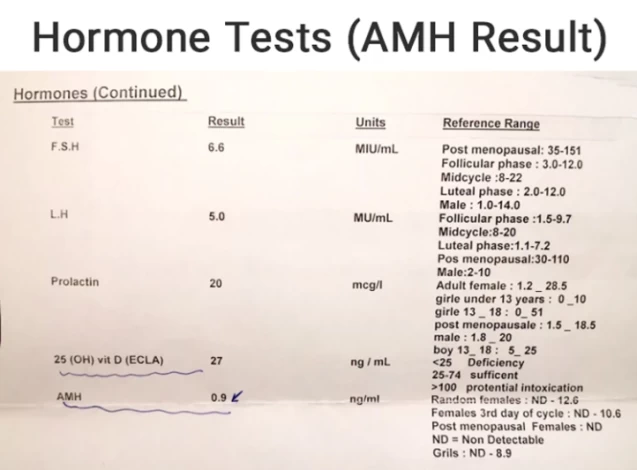
Who Should Get an AMH Test?
Women under 38 who want to postpone their pregnancy should undergo an AMH test. If the report shows that the patient has a low ovarian reserve, the doctor will recommend that she try to get pregnant as soon as possible. However, women over 40 have a poor ovarian reserve (POR), so they are not often recommended to undergo the test.
Furthermore, people with a family history of ovarian failure, those with autoimmune diseases, those receiving chemotherapy, and women with past ovarian surgery are required to perform an ovarian reserve test.

What Does an AMH Test Tell You?
The ovaries produce thousands of eggs when the woman is childbearing, but the number of eggs reduces as she ages. The results of the AMH test tell you how many eggs have remained in your ovaries and your chance of getting pregnant (naturally or through artificial insemination). Moreover, the AMH test shows how well your ovaries have responded to ovulation induction drugs and how many mature follicles are in your ovaries after injecting fertility medications. It is noteworthy that the AMH test does not predict your menopause time.
When to Do the Ovarian Reserve Test?
Unlike Follicle-stimulating hormone (FSH), AMH does not vary during the menstrual cycle. Therefore, you can perform the AMH test anytime in the period cycle. Additionally, performing an ovarian reserve test does not require special conditions such as fasting. Furthermore, using contraceptive pills does not affect the result of the AMH test.
What is The Role of the Anti‐Mullerian Hormone in Diagnosing Female Fertility?
AMH levels can help measure female fertility. Pregnancy occurs when follicles, small sacs containing immature eggs, release an egg and move to the uterus. Follicles are found in large numbers inside women's ovaries.
These follicles are formed in the ovaries of baby girls from the embryonic stage, and many of them are destroyed at puberty. When a girl reaches puberty and begins menstruating, one egg matures monthly (approximately every 28 days) and, after splitting its follicle, moves to the uterus through one of the fallopian tubes (uterine tubes).
Pregnancy occurs when the matured egg is fertilized by sperm. Menstrual bleeding will begin after a few days if the egg is not fertilized. The role of the remaining immature follicles in the ovaries is crucial to measuring female fertility. These follicles produce and secrete AMH by measuring the amount of women's ovarian reserves that can be determined.

What is the Role of the AMH Test as a Diagnostic Tool for PCOS?
The ovarian reserve test may also diagnose polycystic ovary syndrome (PCOS). Therefore, in case PCOS symptoms occur, one should see a doctor. These symptoms include persistent acne, menstrual disorders like amenorrhea or early menopause, unintentional weight gain, reduced breast size, hirsutism (abnormal hair growth on the face and body), etc. Very high AMH levels (Over 3.0 ng/ml) often are a sign of PCOS. If the patient is diagnosed with PCOS, she should do an AMH test. It is important to note that AMH levels of PCOS alone are not enough, as other factors, such as hormonal tests and ultrasound findings, should also be considered.
What Factors Affect the AMH Test Result?
Several factors interfere with the AMH test results; however, each effect has not been determined. These factors include chemotherapy, radiation therapy, obesity, use of oral contraceptive pills, smoking, PCOS, ovarian surgery, preeclampsia, and ruptured ovary. The race factor is also effective in the results of the anti-Mullerian test. So, if you have more than one of the above features, you may not fall in the AMH normal range.

What is the Correlation Between Anti-Müllerian Hormone and Age?
There is an inverse relationship between the AMH level and women's age. In other words, AMH levels gradually decline as the count and quality of eggs reduce with age. Women aged 20 to 30 have the highest count and quality of eggs (known as golden eggs). Almost from the age of 33, the count and quality of eggs decrease.
Young women with low egg counts and AMH still have a better chance of pregnancy than older women, as the number and quality of eggs decline with age. However, young women with low egg counts still have higher-quality eggs, so they have a great chance of experiencing a successful pregnancy, especially through IVF.
Furthermore, older women with high AMH levels cannot expect a 100% successful IVF. The reason is that even with a high count of eggs, most of the eggs have low quality and may not lead to the production of healthy and strong embryos.
What is the Influence of AMH on IVF success?
The success of IVF depends mainly on the number and quality of retrieved eggs. The adequate ovarian reserve identified by high AMH levels increases the chance of IVF success. It is because the more and healthier eggs are obtained, the more likely the product of a healthy embryo in the lab and achieving a successful pregnancy.
The egg count decreases with age, especially after 38, and most have genetic abnormalities, which increases the probability of IVF failure.
Therefore, a low AMH level can be a warning sign for the impossibility of retrieving many healthy eggs after ovarian stimulation in the IVF method. In general, AMH levels below one ng/ml may cause the following problems in IVF treatment:
- Decreasing the number of collected eggs during egg retrieval;
- Increasing the chance of abnormal fertilization;
- Increasing the risk of a canceled IVF cycle and inability to retrieve eggs.

What Is the AMH Test Used for?
AMH test procedure is used in the below cases:
- Evaluating both the ovarian health and ovarian reserve as well as the condition of the follicles in the process of fertility treatment;
- Measuring the polycystic ovary syndrome (PCOS);
- Evaluating ovarian cancer as well as the effectiveness of its treatments;
- Evaluating fetal conditions and diagnosing its gender;
- Predicting the onset of menopause;
- Finding the causes of premature menopause;
- Determining the causes of primary amenorrhea (not having a period by age 15) or the absence of menstruation at an older age;
- Finding the causes of irregular periods;
- Evaluating testicular function in male infants;
- Measuring the causes of missed or undescended testicles;
- Determining the reason for developing male traits (virilization), such as excessive hairiness, hoarseness, etc., in women.
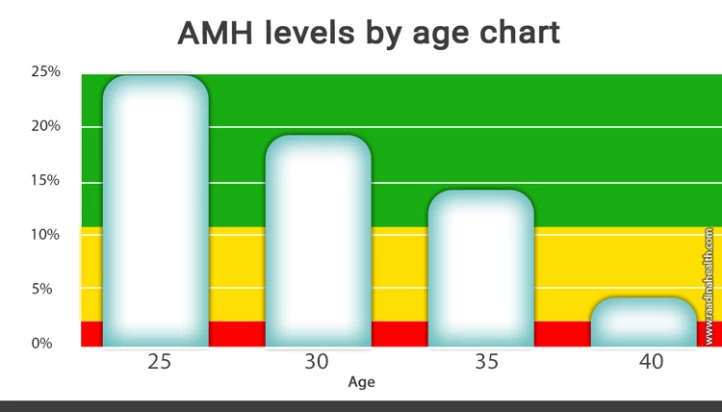
Treatment Options for Women with Reduced Ovarian Reserve Based on AMH Test Results
The AMH test is an essential tool for assessing a woman's ovarian reserve, helping to predict her fertility potential. Women with reduced ovarian reserve may face challenges when trying to conceive naturally, but there are various treatment options available to assist them. For low responders, the Lupron “flare” protocol is often used for ovarian stimulation to enhance egg production.
Additionally, in vitro fertilization (IVF) with assisted hatching may improve embryo implantation. In cases where ovarian reserve is significantly reduced, IVF with donor eggs offers another viable solution, providing an opportunity for conception using eggs from a younger, healthy donor. These treatments, guided by the insights from an AMH test, help tailor fertility approaches for women with diminished ovarian reserve.
Conclusion
Monitoring AMH levels can be beneficial for women planning to start a family or experiencing difficulties conceiving. By assessing ovarian reserve through the AMH test, doctors can better understand a woman's fertility potential and make informed decisions regarding infertility treatments.
Infertility treatments such as egg donation and IVF can help overcome issues related to low AMH levels by increasing the chances of successful fertilization and implantation. Consider seeking treatment in Iran, where a range of advanced infertility treatments, including egg donation and in vitro fertilization (IVF), are available. Iran boasts a well-developed medical infrastructure and highly skilled fertility doctors. By consulting with our experts at Raadina Health, you can receive personalized guidance and assistance throughout the process.
Contact us for a free initial consultation about IVF in Iran.
WhatsAppTelegramFacebookEmailFrequently Asked Questions about Ovarian Reserve Test
1) What is the normal range of ovarian reserve?
The normal ovarian reserve level depends on age. This level in a 35-year-old woman is 1 to 3.5 ng/ml.
2) What causes high ovarian reserve?
A high AMH level shows a high chance of fertility. It is also one of the PCOS symptoms.
3) Does the AMH test require fasting?
No, the AMH test does not require fasting.
4) Is the AMH test affected by contraceptive pills?
No, it is not. As AMH is produced constantly by growing follicles in the ovary, contraceptive pills do not affect its levels.
5) Do some diseases affect AMH test results?
Yes, some underlying disorders cause changes in the AMH test. Some conditions increase the AMH level, and others decrease it.
6) How do I know if my AMH is not normal?
Several symptoms indicate abnormal AMH levels. We can mention reduced breast size, acne, early menopause, hirsutism, weight gain, etc.
7) What is the best treatment for low AMH levels?
If the AMH test results fall far below the normal range, the couple should use IVF to conceive. A healthy lifestyle and diet can also increase the AMH level in the long run.
8) Is it possible to get pregnant with a high AMH level?
A high AMH level suggests a larger number of eggs and potentially better ovarian reserve. However, while a high AMH level may indicate good fertility potential, it does not guarantee pregnancy or the ability to conceive. Other factors, such as age, overall health, and the health of the reproductive system, also play a role in fertility and the ability to get pregnant.
9) What is a good AMH level for IVF?
A higher AMH level is considered favorable for IVF as it suggests more eggs available for egg retrieval. Generally, a good AMH level for IVF is above 1.0-1.2 ng/mL.
10) Does Low AMH Mean I'm Infertile?
A low AMH level does not necessarily mean that you are infertile. You can get pregnant regardless of low AMH level as long as you ovulate one egg per month.
11) What Should I Do if My IMH Level Are Low?
If your levels of AMH (anti-Müllerian hormone) or ovarian reserve are low, it is essential to consult with a fertility doctor. They can provide personalized advice based on your situation and help you understand your options. Your fertility specialist can explain the various options available to you, such as egg freezing, embryo freezing, or assisted reproductive techniques like IVF.




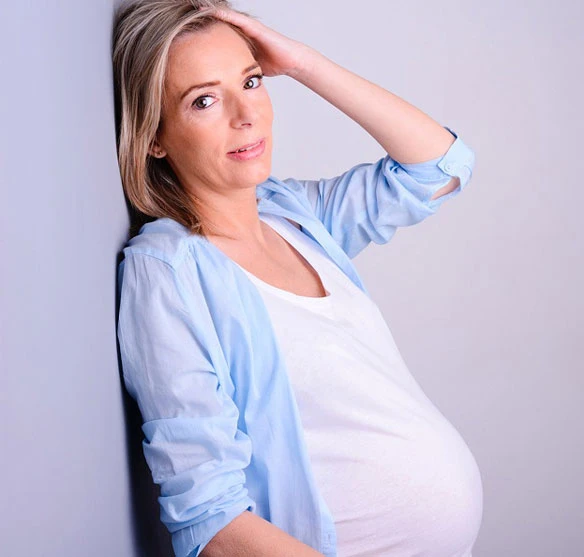

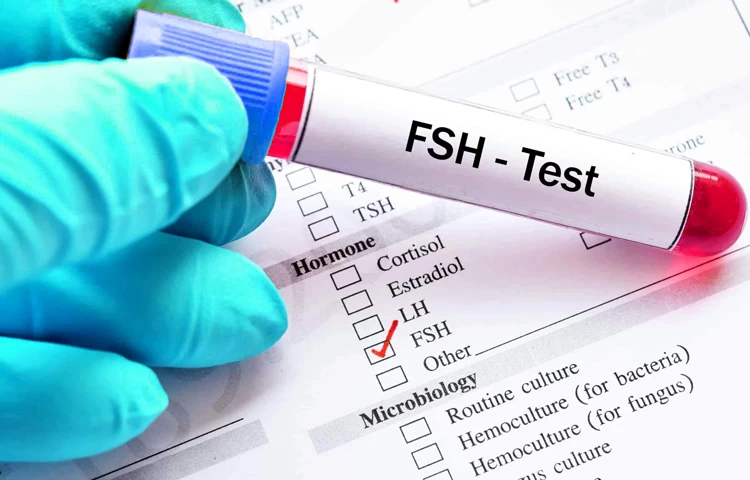


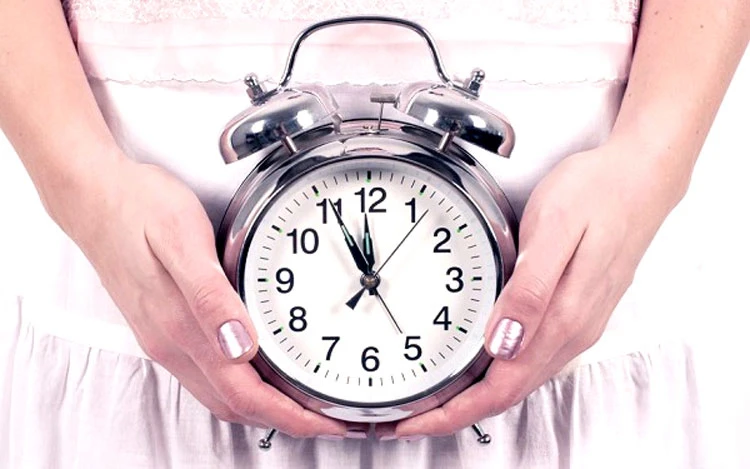
User
-0.92 AmH can i conceive naturally
فاطمه وجهی
-the result is a little on the edge since at least 1.0 is necessary for pregnancy. although, there are several ways to increase Amh to some extent. Try a better food regimen, start taking supplements, and finally you can try prp. Hope it helps.